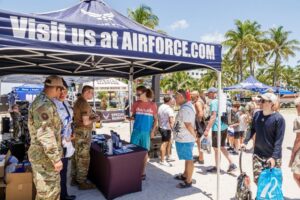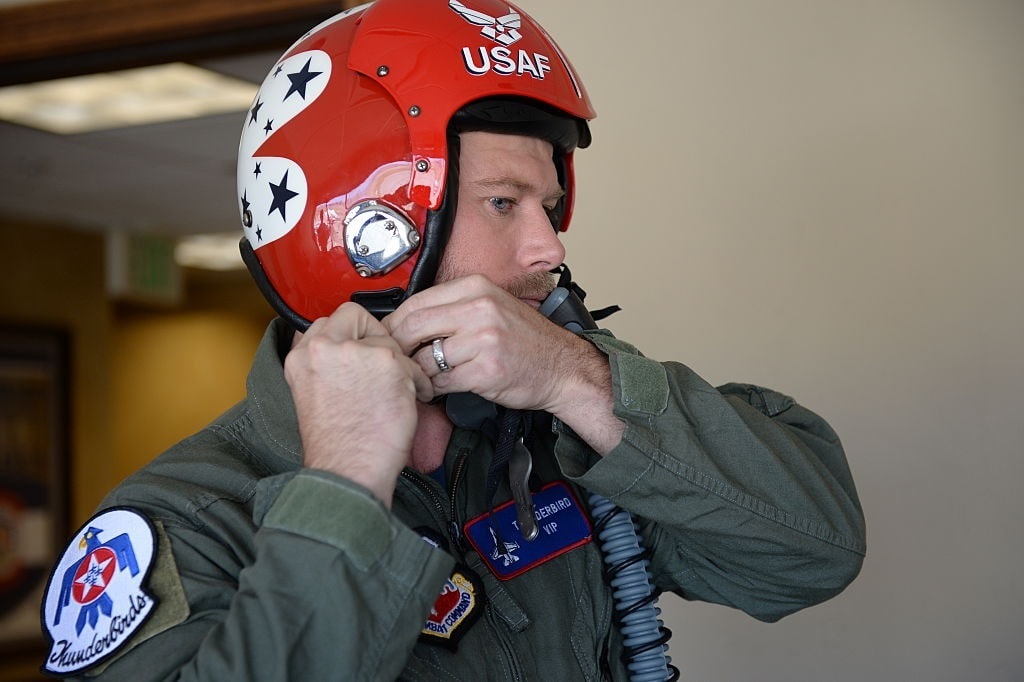While other military services have struggled for more than two decades, the Air Force had met its recruiting goals. But no more. And the deficit of talented recruits is reflected in a dearth of pilot trainees. Some say it was just a matter of time before the wokeness introduced into the military would discourage potential recruits from serving in the Air Force. But a host of other problems make flying and fighting unappealing.
What part the shifting Air Force cultural environment plays is hard to determine, but safe to say it plays some role. For prospective pilots, the excessive emphasis on “non-piloted” vehicles could have a chilling effect. The fascination with drones has cast a shadow over the mystique attached to flying heavier-than-air machines and bending the physics of flight to the human will. Slipping “the surly bonds of Earth,” and dancing in “the skies on laughter-silvered wings,” and climbing sunward, joining “the tumbling mirth of sun-split clouds” – as exalted by John Gillespie Magee in High Flight — will be done by circuit boards, servos, and Play-Station™-like joy-sticks hundreds, if not thousands, of miles from the pilotless airframe. Where’s the joy of flight in that?
Air Force Pilot Training More Virtual Than Real
For those who do enter Air Force pilot training, it is more a virtual world than a physical one. In a recent description of the new undergraduate pilot training (UPT) syllabus, Greg Hadley, writing for Air & Space Forces Magazine, conveyed the thinking of Maj. Gen. Clark Quinn, commander of 19th Air Force and responsible for UPT formal training. Hadley noted:
“With an increased emphasis on self-paced learning, virtual reality, artificial intelligence, and increased simulator time, the revamped syllabus also made a major change in granting wings to pilots after they finished initial pilot training on the T-6 Texan II, but before they completed advanced training on either the T-38 Talon or T-1 Jayhawk.”
These are all UPT aircraft — not operational fighters or tankers or bombers. The T-38 Talon is supersonic aircraft, the T-1 is not. Awarding wings to pilots who have never experienced supersonic flight indicates they have been short-changed in airmanship, flying skills, and an understanding of aerodynamics. What a shame.
 When aircraft, for whatever reason, enter a flight regime requiring significant skill to recover, there is no video game “reset” to return to straight and level flight. Being able to manipulate flight controls to achieve safe flight again instills pride in piloting skills. The alternative is unforgiving. That comes from flying real airplanes.
When aircraft, for whatever reason, enter a flight regime requiring significant skill to recover, there is no video game “reset” to return to straight and level flight. Being able to manipulate flight controls to achieve safe flight again instills pride in piloting skills. The alternative is unforgiving. That comes from flying real airplanes.
For now, the Air Force struggles to maintain its pilot accession numbers to achieve a combat-ready force structure. “The Air Force will fall short of its fiscal 2023 pilot training goal by about 120 airmen, missing its annual target of around 1,500 new aviators for the eighth consecutive year, the service confirmed Sept. 8,” Rachel S. Cohen explained in Air Force Times.
Even more critical to sustaining capability is the retention of qualified pilots. Not having a full pipeline of new pilot recruits jeopardizes the total production since not all who come through the door make it out with wings. “It also puts more pressure on the service to retain experienced pilots. More than 650 airmen, or 67% of eligible people, have accepted bonus pay under a legacy program aimed at keeping aviators in uniform, the Air Force said Aug. 30,” Cohen wrote. That means roughly one-third didn’t.
Air Force Recruiting Misses Goal for First Time in Decades

(Photo by: Jeffrey Greenberg/Universal Images Group via Getty Images)
The pilot production and retention statistics tend to be representative of the general recruiting challenge. For the first time since 1999, the Air Force will miss its overall recruiting goals. At a recent media round table discussion, the secretary of the Air Force told Military.com: “We’re almost to the end of the fiscal year, and the expectation is we’re going to come in short about 10%.” Tom Novelly suggested in his article for Military.com the reasons for poor recruiting are the “lingering effects from the COVID-19 pandemic, strong employment numbers, and cultural headwinds making it more difficult to convince Generation Z to join the ranks.” The “cultural headwinds” no doubt involve the struggle to get young people to join a military that values diversity over skills, experience, competence, and other measures of merit.
The publication STARRS – identified as “Veterans standing against CRT/Woke Ideology in the military and service academies” — quoted Alex Wagner, the Department of the Air Force assistant secretary of the Air Force for manpower and reserve affairs: “We’ve got an increasingly diverse country; we’ve got demographic trends creating even more diversity. We have to be, in order to succeed, a mirror of the country that we claim to and do defend.” This thinking is delusional at best and hostile to US national security in its worst application. Wagner goes on to make this laughable observation: a diverse Air Force will “scare the hell out of our adversaries.”
Eschewing merit in choosing Air Force recruits dampens motivation in the military’s target audience to join. To solve the shortfalls, senior leadership must value skill, experience, and competence over diversity. People will want to join a team they have confidence is the best at what it does.




